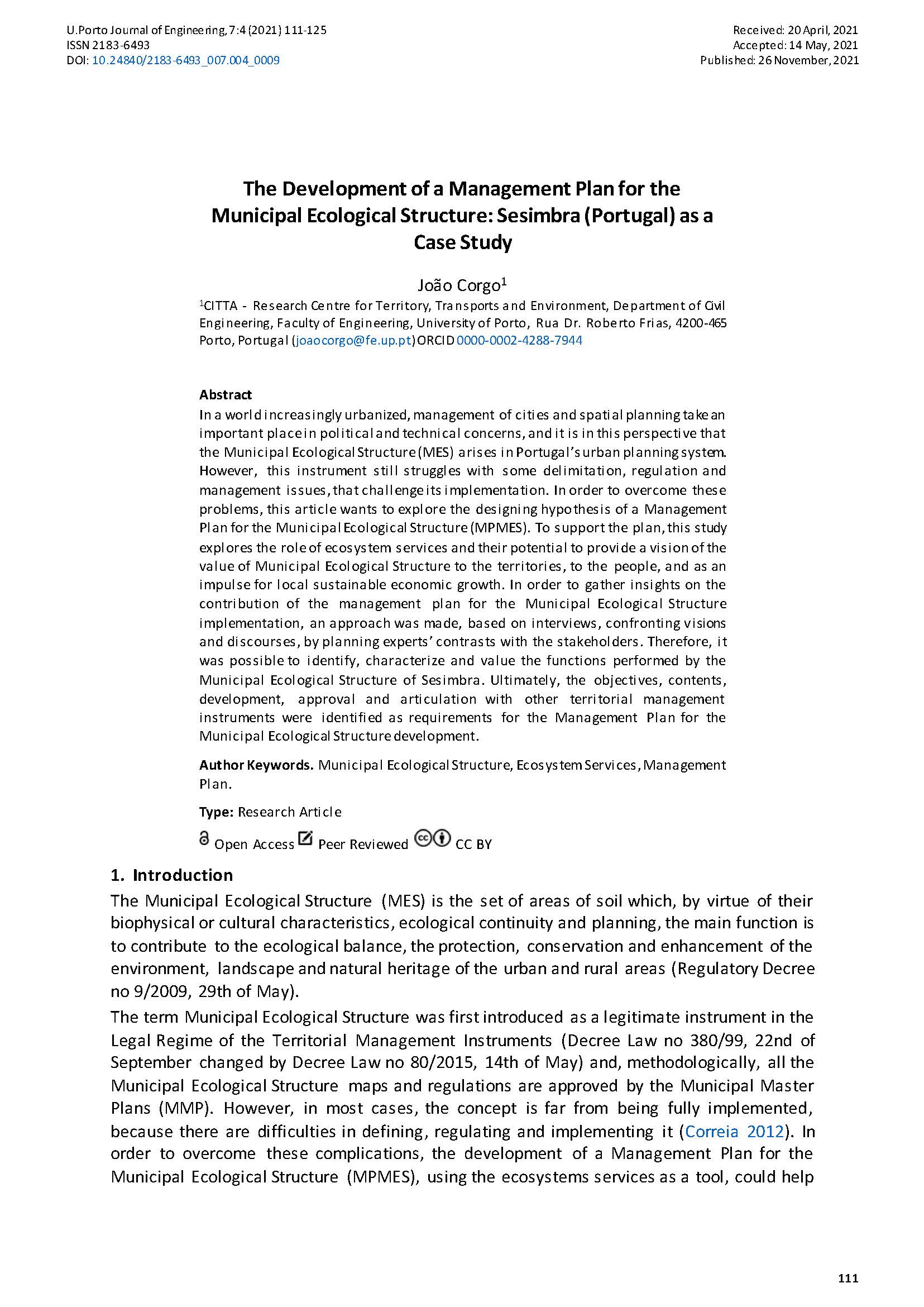The Development of a Management Plan for the Municipal Ecological Structure Sesimbra (Portugal) as a Case Study
Main Article Content
Abstract
In a world increasingly urbanized, management of cities and spatial planning take an important place in political and technical concerns, and it is in this perspective that the Municipal Ecological Structure (MES) arises in Portugal’s urban planning system. However, this instrument still struggles with some delimitation, regulation and management issues, that challenge its implementation. In order to overcome these problems, this article wants to explore the designing hypothesis of a Management Plan for the Municipal Ecological Structure (MPMES). To support the plan, this study explores the role of ecosystem services and their potential to provide a vision of the value of Municipal Ecological Structure to the territories, to the people, and as an impulse for local sustainable economic growth. In order to gather insights on the contribution of the management plan for the Municipal Ecological Structure implementation, an approach was made, based on interviews, confronting visions and discourses, by planning experts’ contrasts with the stakeholders. Therefore, it was possible to identify, characterize and value the functions performed by the Municipal Ecological Structure of Sesimbra. Ultimately, the objectives, contents, development, approval and articulation with other territorial management instruments were identified as requirements for the Management Plan for the Municipal Ecological Structure development.
Downloads
Article Details

This work is licensed under a Creative Commons Attribution 4.0 International License.
Authors who publish with this journal agree to the following terms:
- Authors retain copyright and grant the journal right of first publication with the work simultaneously licensed under a Creative Commons Attribution License that allows others to share the work with an acknowledgement of the work's authorship and initial publication in this journal.
- Authors grant the journal the rights to provide the article in all forms and media so the article can be used on the latest technology even after publication and ensure its long-term preservation.
- Authors are able to enter into separate, additional contractual arrangements for the non-exclusive distribution of the journal's published version of the work (e.g., post it to an institutional repository or publish it in a book), with an acknowledgement of its initial publication in this journal.
- Authors are permitted and encouraged to post their work online (e.g., in institutional repositories or on their website) prior to and during the submission process, as it can lead to productive exchanges, as well as earlier and greater citation of published work (See The Effect of Open Access).

